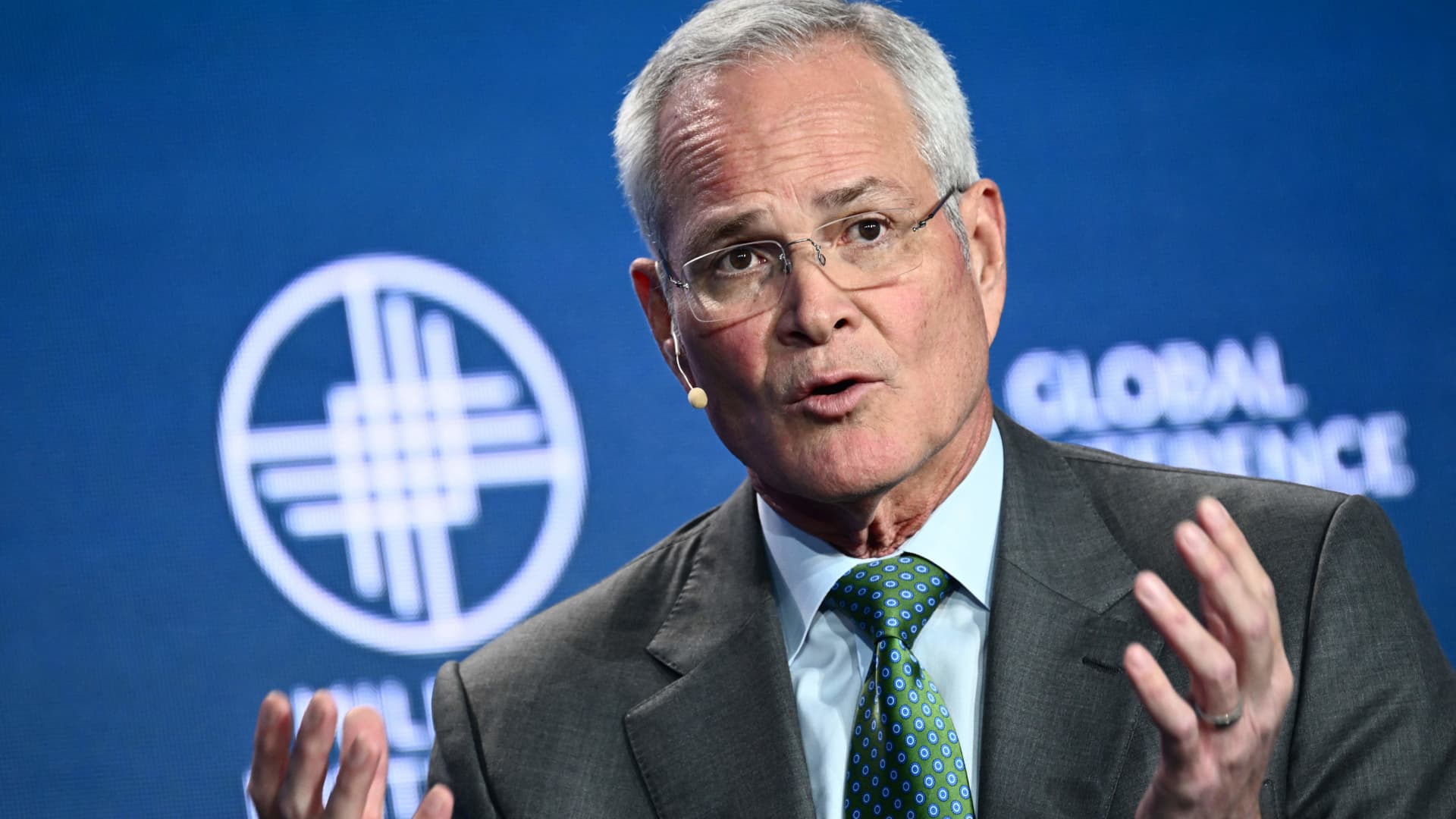Exxon Mobil is working on technology to directly remove carbon dioxide from the atmosphere with the goal of slashing sky-high costs by half, CEO Darren Woods said Friday.
Woods said direct air capture technology holds huge long-term potential as a tool to address climate change. But it is currently unaffordable at scale, with the removal of atmospheric emissions costing between $600 to $1,000 per ton.
“If you tried to apply that across the emissions challenge the planet has, the world won’t be able to pay for that,” the CEO said during Exxon’s quarterly earnings call. “We’re focused on how we can make this technology broadly applicable at a cost that society can afford.”
The oil major has launched a pilot project in Baytown, Texas, to test the feasibility of its proprietary direct air capture process. Woods acknowledged the technology would still be too expensive to scale globally, even if Exxon reduced its current cost by 50%, but achieving that goal would demonstrate the value of the concept and drive further development.
The price needs to come down to somewhere around $100 per ton of carbon captured for the technology to become a viable tool to fight climate change, Woods said. He added that atmospheric emissions are extremely dilute and require a massive amount of air to be processed to remove a single ton of carbon dioxide.
“This is a tough challenge to break and I’m not pretending like we’re going to be the ones to solve it,” Woods said. “But I am confident that we will give it our all, applying our capabilities.”
Dozens of universities and companies in addition to Exxon are working to make direct air capture scalable, the CEO said. Regardless of who breaks through, Exxon will play a major role in the market, he said.
“Once we have a technology that gets to the right cost level, you’re going to need global deployment at scale,” Woods said. “I suspect that the technology that will be required for the future, lower cost direct air capture, will be different than what we’ve got today and will require some of the technical capabilities that we have.”
Exxon is also a leading player in efforts to ramp up carbon capture and storage technology, a different process that removes higher concentration emissions streams from industrial processes. The oil major is building a pipeline and storage network along the Gulf Coast, with three contracts signed to remove emissions from the operations of CF Industries, Nucor and Linde.
Carbon capture and direct air capture are controversial tools to address climate change. The technologies are expensive and difficult to scale; so far, very few projects have reached the final investment stage.
Some activists accuse the oil industry of investing in the technology to prolong the life of fossil fuels. The International Energy Agency has described carbon capture as “critical” to achieve net-zero global emissions by 2050 but said that the oil and gas industry needs to prove that the technology can operate at scale. The IEA has also warned the industry against overreliance on the technology as a solution to climate change.
